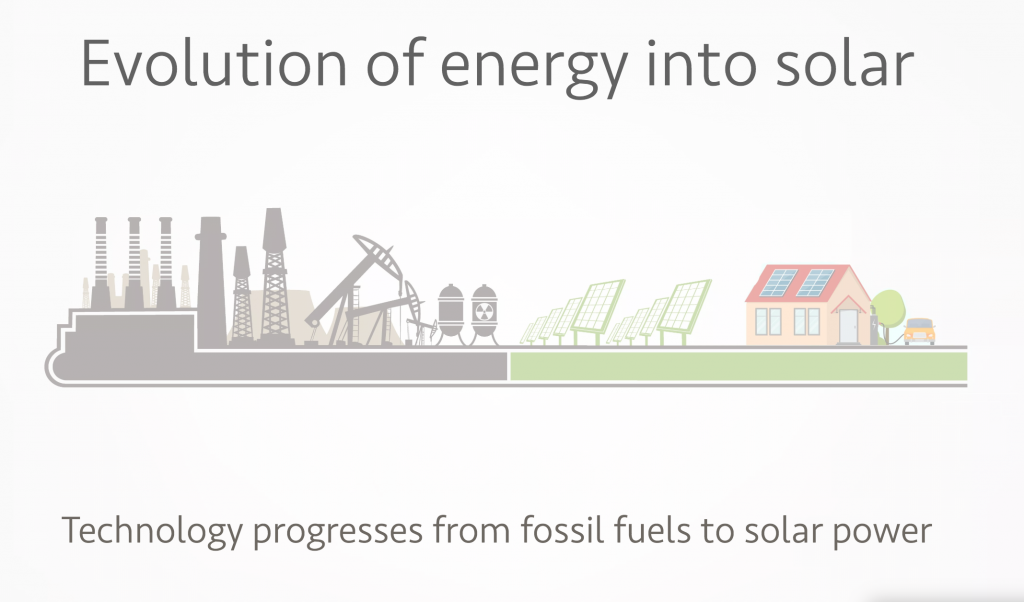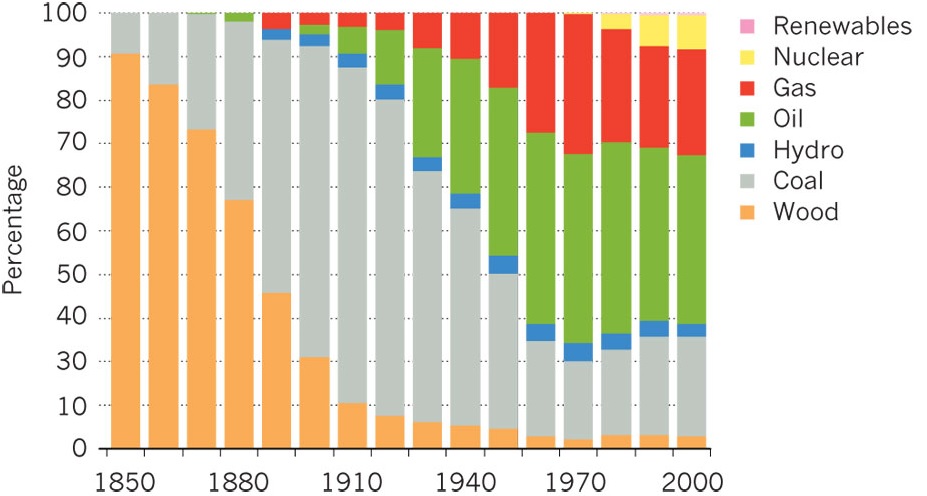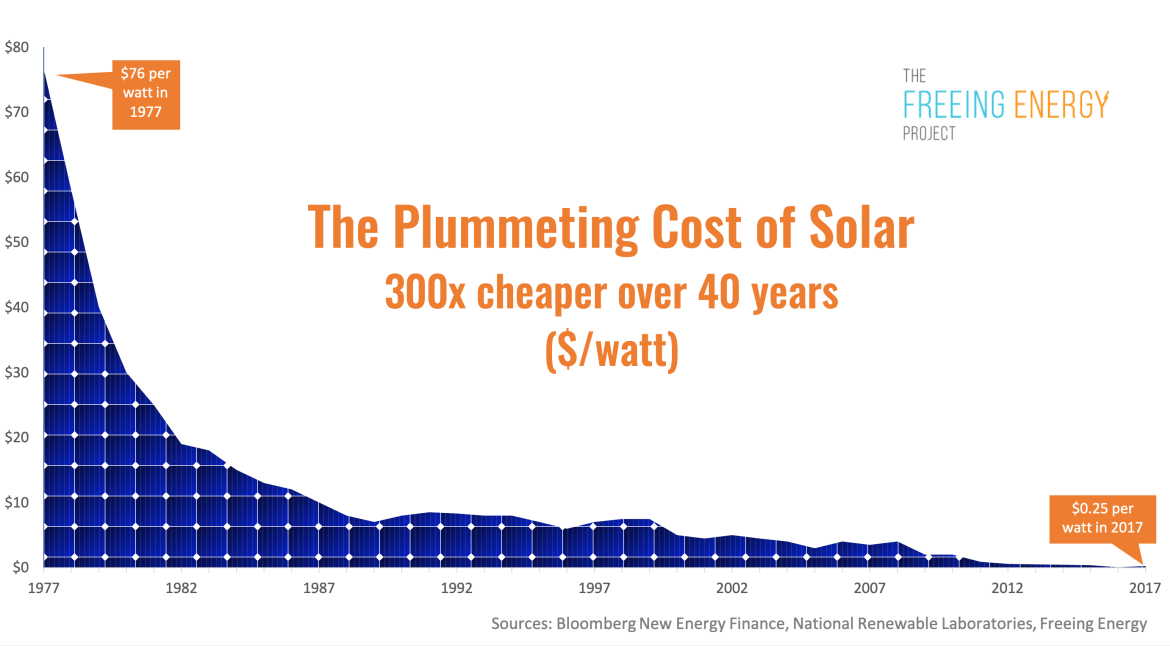
The Future of Energy is Written in a Star
Have you ever wondered where Earth’s energy comes from? While it may sound surprisingly simple, all of the energy we use comes from the sun! Serving as an interplanetary power hub, the sun nurses and nourishes the planets that orbit it with electrifying streams of light radiating from its fusion-filled core. Essentially, Earth and its sister planets have spent the eons spiraling through the galaxy, basking in radiation – making them a truly nuclear family! But how do we transform the energy delivered by the sun into useable power? For many millennia, we had to go through a circuitous, kinetic bureaucracy to gain access to energy ensnared in a variety of vessels upon its arrival to Earth. Despite the fact that the air was teeming with raw, photovoltaic energy, we couldn’t access it in its free-floating form. Instead, we were forced to unlock it from the plants, fossils, wood, and other materials within which it was stored. As the eras marched on, humanity devised new ways to extract power from an ever-increasing list of natural resources. The output of each new source outgunned that of its predecessors – Windmills fell victim to the winds of change as coal took over their role, but only until it found itself ousted by petrol. With nothing lasting forever, petroleum’s onward charge has started to short circuit as a new wave of cleaner, renewable sources of energy have threatened to drive fossil fuels to extinction. At the forefront of this renewable revolution is solar energy. Recent advancements in photovoltaic technology have made solar arrays cheaper, more efficient, and easier to obtain than ever. It’s no wonder millions have defected to the green side, with private residences, corporate offices, and government buildings throughout the world choosing a better way forward that leaves outdated utility companies in the dust. The dawn of solar energy had rapidly ushered in a bright new approach to keeping the world in motion whose momentum only keeps growing!
The Evolution of Energy Technology
Early humans relied on the sun to keep their homes warm. In the event that the sun had other plans, however, our ancestors developed alternate methods of keeping the mercury at a comfortable level. Most of these involved burning things – wood, at first, but when timber supplies waned, our Paleolithic predecessors switched to coal as their fuel of choice. As their civilizations grew in scale, demand for food grew accordingly. This led to a need for grain processing in industrial proportions, and windmills were developed that harnessed the energy coursing through the breezes for cranking the gears of grain milling machines. Other common ways of bringing early machinery to life included using water wheels or the oxen equipped with yokes. Our humble ways of generating power began to pick up steam thanks to the contributions of Thomas Newcomen and James Watt, who developed the steam engine. Feeding off of coal, these powerful implements generated enough horsepower to make a team of thoroughbreds look like ponies, and soon, they dominated the world’s industrial landscape. By the tail end of the 19th century, however, Thomas Edison discovered how to use coal to power electric generators, and the reign of steam petered out. At around the same time, visionary Lester Allan Pelton completed his design for an impulse water turbine. Within a few decades, hundreds of hydroelectric water plants had sprouted throughout the nation. Paired with Charles Brush’s 1888 invention of the electricity-generating wind turbine, these two innovations set the stage for a future in which electricity could be acquired through renewable, pollution-free means. Years later, advancements of the Atomic Age taught us how to unlock massive bursts of energy entrapped within the smallest of particles, as nuclear power demonstrated that even mushroom clouds could have a silver lining. Over time, global concern about the sustainability of our energy sources grew, and research into clean, renewable solutions began to gain momentum. By the ’70s, a breakthrough in the evolution of green power materialized in the form of the photovoltaic cell. Unlike existing renewable avenues, PV cells decentralized control of electric generation, allowing households and businesses to utilize readily- available solar energy to meet their energy needs.

Solar Energy is Readily Available
Over the years, renewables such as hydroelectric, wind, and solar energy have seen their presence in the energy market balloon. Between 2001 and 2016, the amount of energy obtained through renewable sources grew by more than 100%, with over 14% of all domestically-produced energy now coming from renewables.
Solar energy, in particular, has experienced a precipitous drop in pricing, as new innovations in the technology have transformed it into a widely-accessible, budget-friendly alternative to volatile utility company bills.

Not only has its price per watt plummeted below that of its conventional competitors, but also forward-thinking leasing options from Neeeco Solar have given Bay State residents a clear escape from the chokehold of continually-rising home energy rates. With locked-in, market-proof prices and no upfront costs, leasing a solar array is a guaranteed way to use cutting-edge technology to trim your energy expenditures by 20%.
The Sun Is On the Horizon
Solar is no longer a distant spec on a far-flung horizon. In fact, it’s become the primary source of power for thousands of homes, businesses – and even satellites! Investment in solar has snowballed so tremendously in the past half-decade that the government is considering terminating incentive programs meant to help solar gain a foothold in the market, such as SREC and SMART, due to their targets being reached. Fortunately, customers that enlist in these programs now will remain grandfathered in beyond their phase-out dates! A recent study by the National Renewable Energy Laboratory echoed the idea that the future of energy generation is written in the stars (or at least in the one around which we orbit). Their research concluded that by 2050, falling costs of solar energy will multiply the nation’s installed photovoltaic capacity by nearly twenty times its present 50 GW capacity. At 971 GW, that would be enough solar to meet one-third of the nation’s electric needs through solar.

Replace old power with 21st-century energy
The future of energy is in Solar, but that doesn’t mean you have to have to wait until then to start saving. Get a jump start on reducing your household’s heating and cooling costs by calling Neeeco Solar for a quote! Whether you choose to rent and start saving immediately, or you want the long-term energy independence offered through buying, Neeeco can provide a personalized solution that matches your needs. The green revolution is only beginning. Join the thousands of satisfied customers throughout New England that have bid farewell to outdated electric companies and discovered a way of attaining better fares. It’s never too early to use the technology of tomorrow to bring down your costs today.
Call (781) 514-5882 or contact us to get started with a no-cost Mass Save® home energy assessment.
